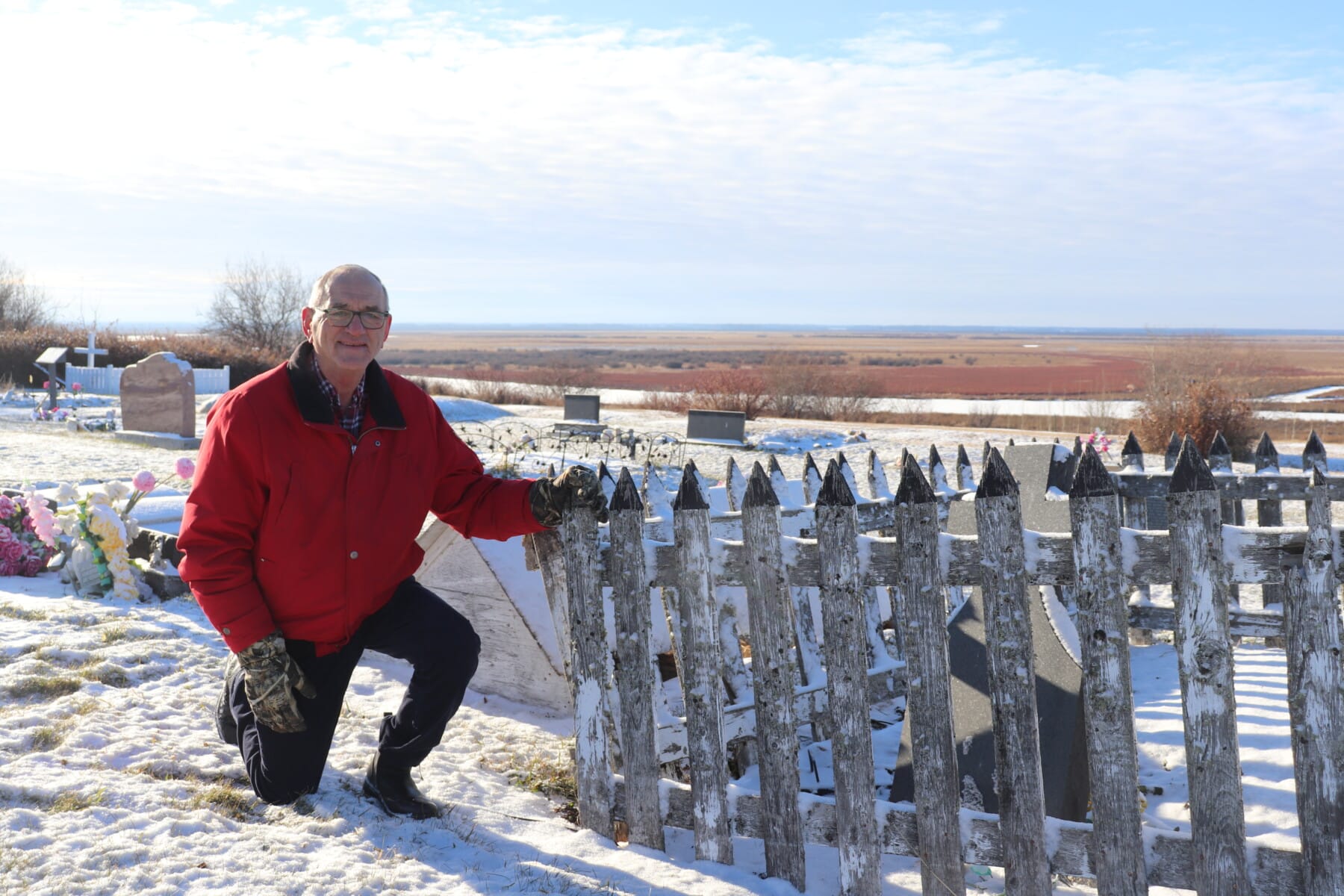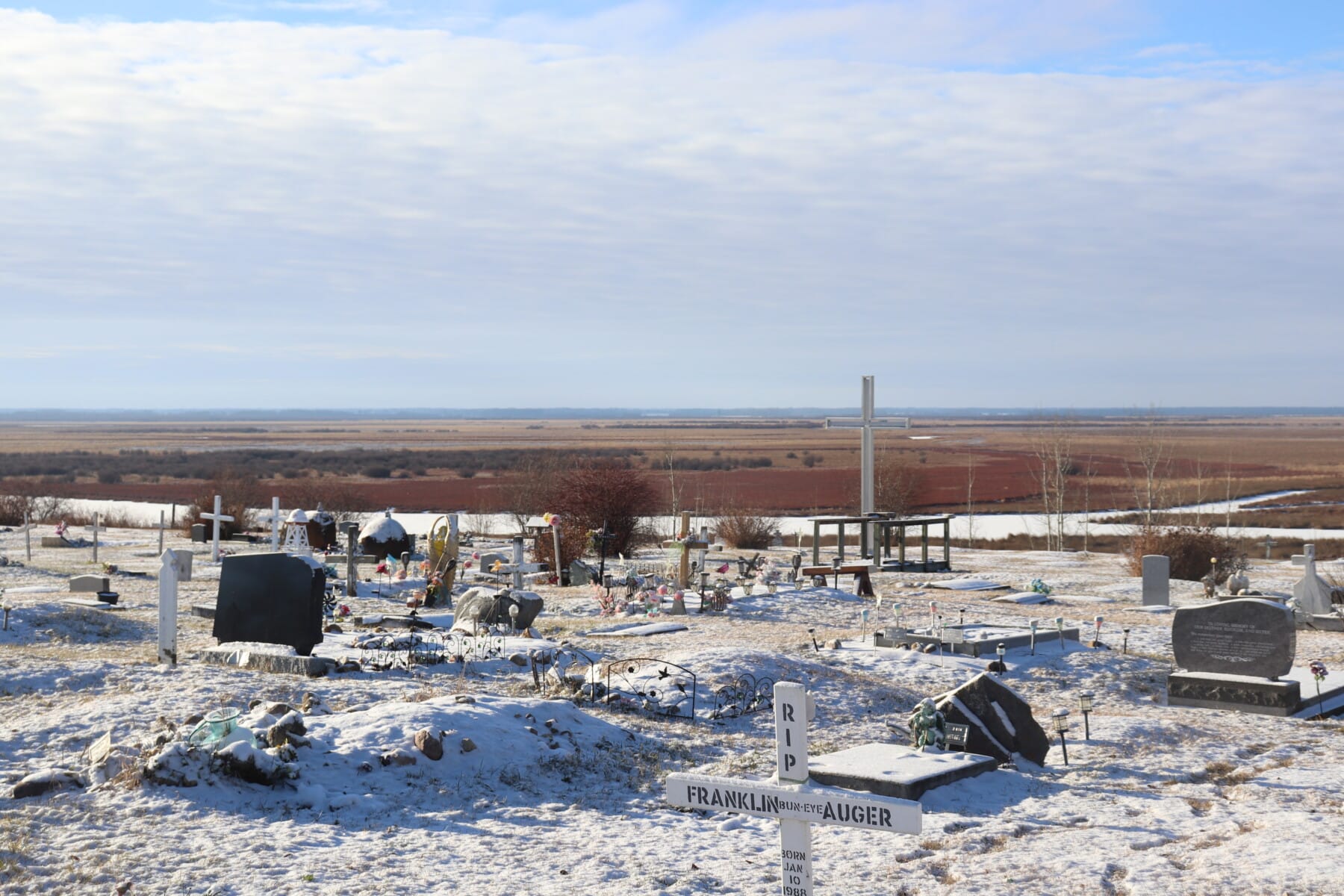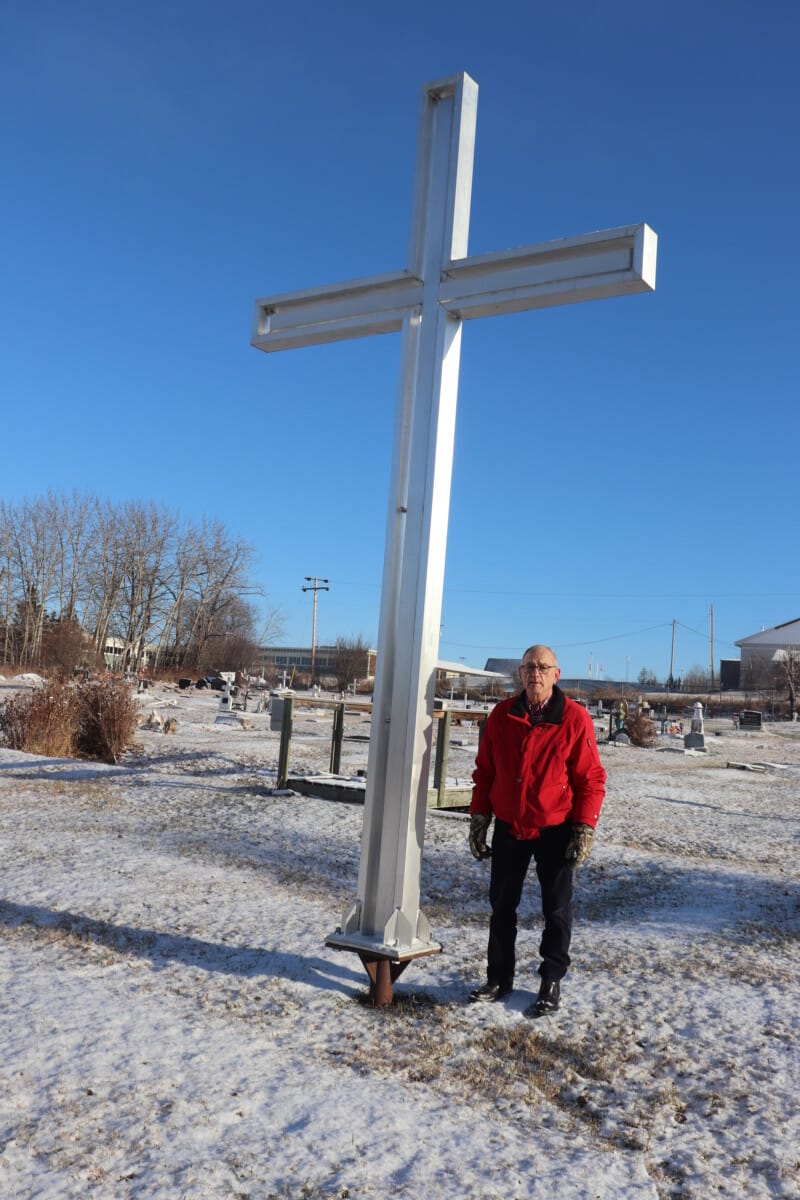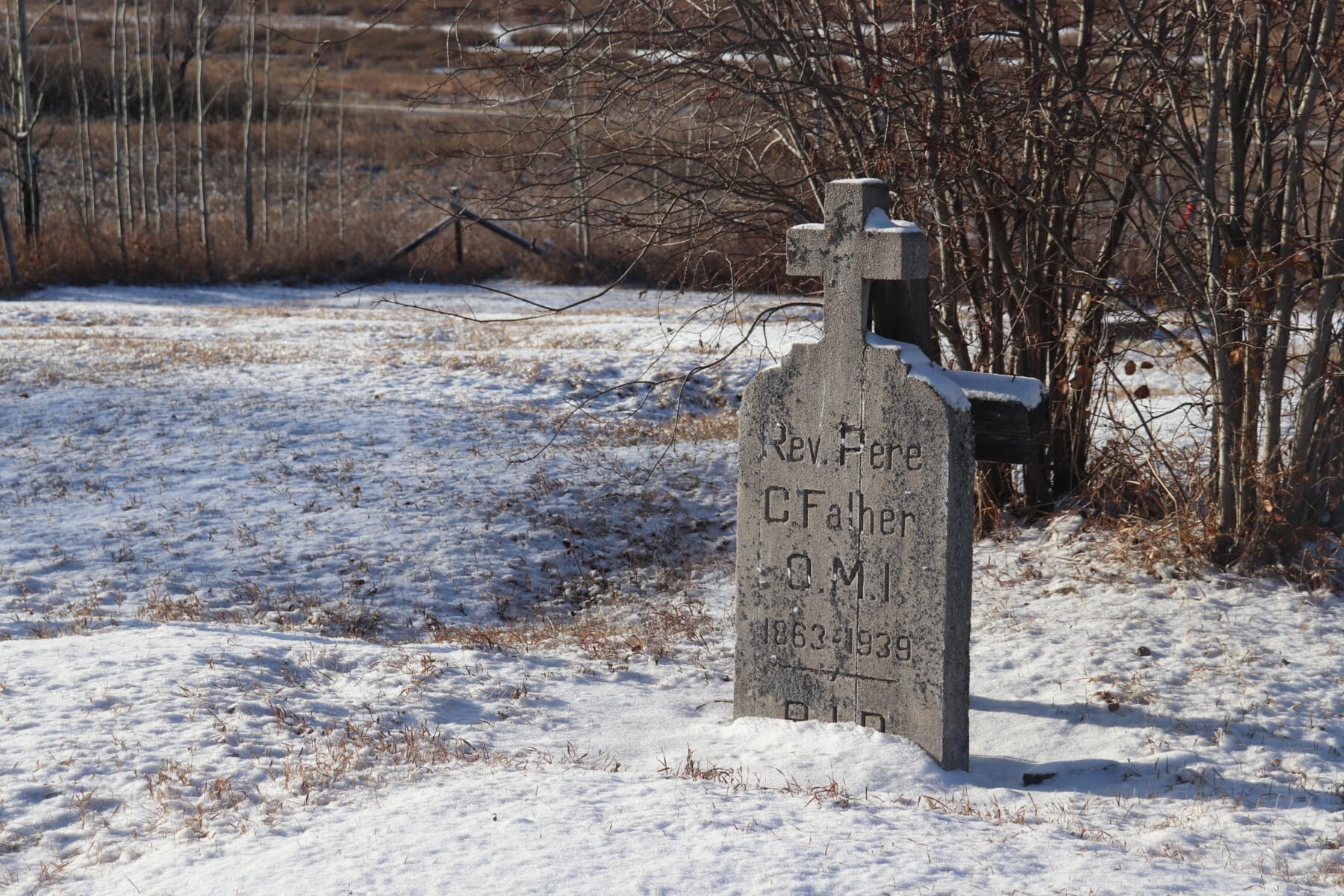
The ‘cemetery man’
Hector Goudreau helps preserve local history through his efforts to clean-up Grouard’s 125-year-old cemetery
One of the most historic sites in the archdiocese has undergone a serious revitalization in recent years.
Thanks in part to the hard work of one devoted parishioner and Knight of Columbus, the historic Grouard cemetery has gone from being an overgrown and nearly unmanageable burial ground, to now a clean and upkept cemetery that the community can take pride in.
As he today looks over the tombstones, rock piles and crosses extending to the very edge of the site, Hector Goudreau notes that when they had made their first attempts to clean-up this cemetery back in 2017, almost none of these grave markers were visible. Instead, tall grass, bushes, shrubs and trees completely dominated the site.
Pointing to one of the few remaining shrubs still planted in the cemetery grounds, Hector says that at one time the whole area was packed with shrubs just like it, which made seeing a loved one’s grave – let alone visiting it – a near impossibility. Back then, even cleaning up a cemetery this overgrown was being considered a near impossibility.

“I remember being with the Archbishop years ago and looking over this cemetery, seeing him shake his head and thinking maybe it would be best just to let it go,” Hector recalled.
“But where we’re at now – this cemetery is just a matter of maintenance; we’re not fighting with it like we once had to.”
Goudreau, a former MLA from Beaumont, Alberta, has spent much of his retirement years in the community of Hilliard’s Bay.
Since then he’s been an active parishioner at St. Bernard’s Church in the nearby hamlet of Grouard. Over the past seven years, he has dedicated his summers to giving the church’s more than 125 year old cemetery a complete overhaul.
“You can imagine the workout I gave myself pushing the lawnmower up and down this hill,” Hector noted as we walked along the cemetery’s bumpy terrain. “Just to get in between every grave with a lawnmower takes me 20 hours each time.”

With markers dating back to the late 19th century, the cemetery has a long history – much like the community of Grouard itself. Because it is located along the Lesser Slave Lake, Grouard was a central hub in the early settlement years of the Canadian West. It was an area of such vital importance that at one time Grouard was even in the running to be named the capital of Alberta.
The public cemetery overlooking Buffalo Bay, on the western edge of Lesser Slave Lake, reflects that rich history. Near the cemetery still stands some buildings from the early mission days of Grouard. Regrettably, the historic St. Bernard Church that once stood as a sentinel and watchtower over the cemetery, was lost in a fire in 2023. A seperate cemetery nearby is the resting place of many bishops, priests, and religious brothers and sisters. Of note among them are Bishop Emile Grouard, OMI, Bishop Isidore Clut, OMI, Bishop Celestin Joussard, OMI, Fr. Constant Falher, OMI and others.
In our present day, Grouard is a small hamlet made up of less than 200 people. In such a small community with so few resources, the necessary care needed to keep up its cemetery ground was often hard to come by. Inevitably, with time, grass, bushes and other vegetation began to take over the area.
The Grouard cemetery today paints a much different picture however. After several summers and countless hours of mowing grass, cutting brush with chainsaws, spraying with weedkiller, removing rocks, glass and old markings too dilapidated to repair, this cemetery is now fully accessible with every one of its markings visible. As a sign of the new pride the people of Grouard now take in their cemetery, flowers, decorative rocks and even benches have become a common site.
“Since we’ve done all this, people take greater pride in their cemetery,” Hector reflected. “Every once in awhile I come here, and I see a grave has been cleaned up, weeds have been pulled. People have brought flowers. People have left a can of beer or cigarettes at the base of the monument.
“I’m hoping this can bring a sense of pride to the community. The new benches reflect that, as people now spend a lot more time here, even hosting parties near the graves of their loved ones. That would have been rare a few years ago.”
This clean-up effort began in 2017 when the newly appointed pastor of St. Bernard’s Church, Fr. Bill Bernard, OMI decided to organize a day of spring cleaning, gathering a small group of parishioners together with lawnmowers and whipper snippers to tackle the heavily overgrown terrain of Grouard’s cemetery.
With the grass so tall and overgrown, as much as five feet high, and bushes and shrubs sporadically placed throughout, it took a full day just for the group to get through 50 square feet of the site, requiring much strain and struggle along the way.

They did this annual spring clean-up for two years. But with the extent of the task at hand, these one-time cleanups only went so far. By the autumn, almost all of the work they had done was already being covered over by new growth.
“The odd time in the fall we’d also come to work, and it would take us part of a day just to clean up again what we had done in the spring,” Hector recalled. “We did that for a couple of years, and the second time around I told myself that I’d come here on my own and at least maintain what we had already done, so that in the spring we could at least go a little further each time to maintain the area.
“I started coming once a week during the summers and I would spend most of my day here. Each time I would try to push a little further.”
This is only an excerpt. Read the full story in the December 2024 edition of Northern Light